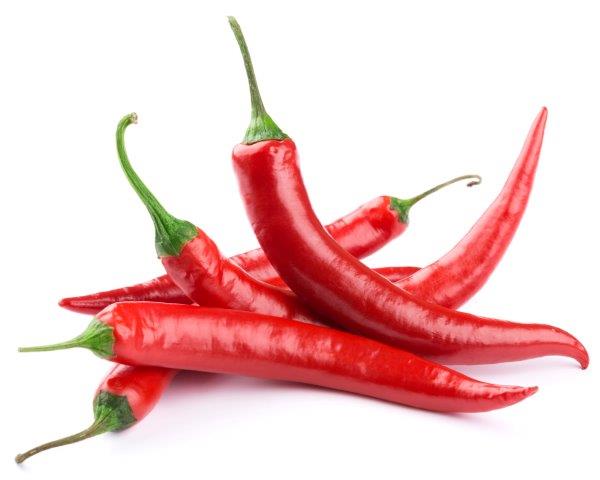
Groundbreaking Research Reveals Natural Substances That Mitigate Chili Pepper Heat — Reevaluating the Scoville Scale
A recent study is stirring the culinary science community — or maybe tempering it. Scholars from The Ohio State University have discovered three natural substances present in certain chili peppers that diminish their typical heat, providing a new angle on the reliability of the Scoville scale. These results, published in the Journal of Agricultural and Food Chemistry, challenge over a century of beliefs regarding the spiciness of peppers and have the potential to redefine both our culinary and pharmaceutical perspectives on heat.
The Puzzle of Missing Heat
For many years, food scientists and spice enthusiasts have grappled with a perplexing issue: some chili peppers simply lack the spiciness their chemical makeup implies. Even those with high levels of capsaicinoids — the compounds usually linked to their intense heat — show substantial variations in perceived spice levels.
“The identification of natural dietary substances that lessen sharpness brings exciting prospects for both the culinary and medical fields,” said Devin Peterson, the lead author of the study and a flavor science researcher at The Ohio State University.
Traditionally, the Scoville scale has been the go-to method for assessing pepper heat, measuring capsaicin and its close counterpart dihydrocapsaicin concentrations. However, the latest research indicates that the actual experience of heat is more complex than merely the presence of capsaicinoids — it encompasses the chemistry of the entire pepper.
Reevaluating Spice Chemistry
To delve deeper into this spice mystery, the researchers studied 10 different varieties of chili peppers, including well-known and exotic options like Chile de árbol, serrano, Fatalii, African bird’s eye, and Scotch bonnet. Each pepper was dried, ground into powder, and standardized to contain precisely 800 Scoville Heat Units (SHU) of capsaicinoids.
The crucial phase involved sensory testing with human participants. Despite the chemical consistency, the testers reported varying levels of heat perception among the samples. Some peppers registered as significantly hotter than others, confirming that additional compounds were influencing the spicy experience.
Three Natural Heat Inhibitors Discovered
Through sophisticated chemical analysis and statistical modeling, the research team pinpointed five candidate compounds. Subsequent examinations validated that three of these had clear heat-suppressing properties:
– Capsianoside I
– Roseoside
– Gingerglycolipid A
Interestingly, these compounds lack their own flavor, suggesting they lower heat perception without altering the peppers’ taste or aroma. They seem to work by directly interacting with the biological pathways activated by capsaicinoids, effectively dialling down the intensity of the fiery flavor without dampening the pepper’s complex profile.
Notably, when combined, the heat suppressors did not enhance one another’s effectiveness, indicating that they may operate through the same molecular mechanisms — potentially modulating TRPV1 receptors in the nervous system, which are key for detecting heat and pain.
Far-Reaching Implications
The researchers believe this discovery holds significant promise. For chefs and food manufacturers, these insights could facilitate the creation of pepper-based products with carefully adjusted heat levels — even allowing for the inclusion of spice in dishes aimed at more delicate palates without causing discomfort. Envision a simple, natural sprinkle that diminishes heat while preserving flavor.
“These innovations could allow for the personalization of appealing spicy flavor profiles or lead to a household ingredient intended to reduce excessive heat in dishes — the anti-spice,” noted Peterson.
In the realm of pharmaceuticals, the implications are even more thrilling. Capsaicin is already utilized in medical products such as creams and patches for easing localized pain by depleting pain-transmitting neurons. Gaining insight into how natural compounds alleviate the burning sensation could pave the way for new, targeted pain relief methods — potentially providing alternatives to opioid treatments.
Reevaluating a Century-Old Standard
The Scoville scale, established in 1912 by pharmacist Wilbur Scoville, has long been the benchmark for measuring chili heat. While its simplicity and correlation with capsaicinoid levels have ensured its continued use, this new research reveals its limitations: it fails to account for the impact of other natural compounds that can greatly alter our sensory experience of heat.
As flavor science evolves, the emergence of a more sophisticated heat measurement system may be on the horizon — one that not only considers capsaicin levels but also incorporates chemical modifiers like heat suppressors. Such a model would provide a more accurate understanding of a pepper’s true spiciness and could revolutionize how the culinary world approaches spice.
What Lies Ahead?
With this discovery, researchers are now investigating the distribution of these compounds across various pepper species and how environmental conditions or breeding methods might affect their concentrations. The findings also pave the way for creating new pepper varieties with optimized flavor and heat characteristics, representing a significant development in precision flavor engineering.
Moreover, the introduction of consumer